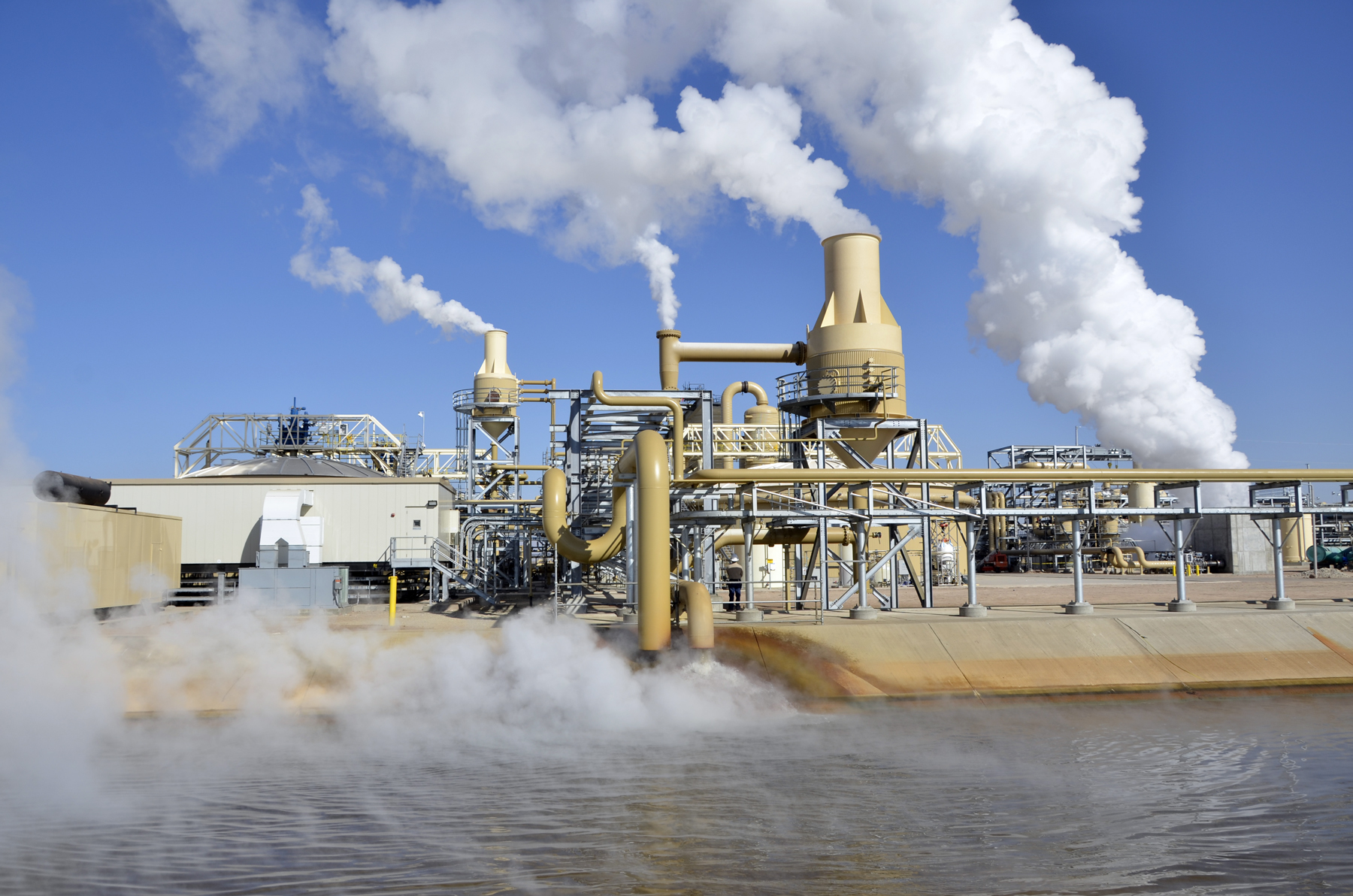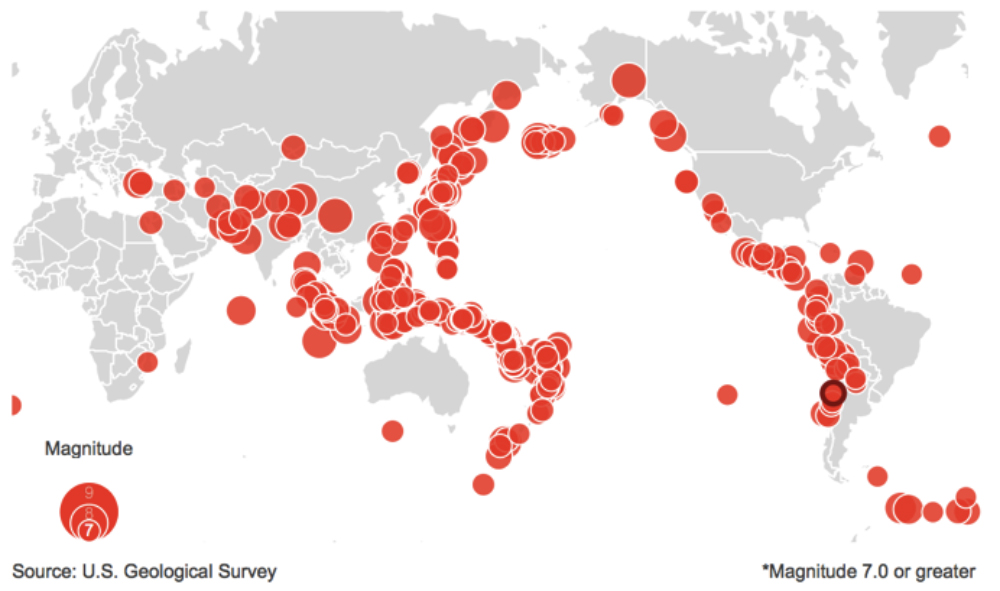Last week when Chile experienced at 8.3 earthquake, New Zealand’s Civil Defence were immediately able to assess the risk of a tsunami reaching our shores. Living on the Pacific’s Ring of Fire we’ve developed sophisticated geological expertise to match the thinness of the earth’s crust underneath our feet. The risk of earthquakes and volcanic activity also brings with it a renewable energy advantage. New Zealand has some of the best geothermal sites in the world.
The temperature at the centre of the earth is more than 5,500 degrees Celsius, similar to the surface of the sun. When molten lava breaks through the earth crust it’s over 1,000 degrees Celsius. The thinner the earth’s crust the easier it is to use this energy to heat water to drive steam turbines. Four of the world’s top five generators of geothermal electricity are located on ‘Ring of Fire’: the United States; the Philippines; Indonesia; and New Zealand.
Geothermal energy’s average capacity factor – a measure of the amount of electricity produced compared with installed capacity – is very high at 75% to 95%. Further, with zero fuels costs, low maintenance requirements, and very low greenhouse gas emissions, geothermal is competitive with fossil fuel generation. Perhaps geothermal’s greatest advantage is its flexibility. Able to operate 24/7, year round, and independent of the weather, geothermal has the potential to produce auxiliary power generation when all other renewable sources are not available.
Sixty years ago we were leaders in geothermal electricity when in 1958 we commissioned the world’s first geothermal liquid generation site at Wairakei. Only very recently have we returned to this geological advantage with the construction of the Kawerau, Nga Awa Purua, Ngatamariki, and Te Mihi power plants between 2008 and 2014. By 2014 New Zealand produced only 16.2% of its electricity from geothermal. Instead, we have continued to invest heavily in carbon polluting gas-fired generation. For example, five years ago, Contact Energy secured consent for a 250 MW extension to its Tauhara geothermal plant near Taupo. Last month however, Contact Energy announced it would be reinvesting instead in its gas-fired plant at Stratford. By comparison, Iceland – with one third the land mass of New Zealand – produces so much geothermal electricity it is considering exporting it 1000 km south to the United Kingdom with the world’s longest undersea cable.
By focusing investment on geothermal energy New Zealand could also secure a comparative advantage in terms of research funding. Last year the United States Department of Energy invested US$257 million in solar energy research but only US$45 million in geothermal. While geothermal plants have very high capacity utilization, the conversion of raw geothermal energy into electricity is only 15%. In other words, only a fraction of the raw energy is captured within each geothermal plant. This presents an extraordinary learning curve opportunity. With strong investment in research and development New Zealand could become a world leader in lifting the transformation efficiency of geothermal energy – creating a geothermal equivalent to solar energy’s Swanson’s law.
This would support not only our path to 100% renewable electricity but could also deliver high value export earnings. Windmills were first widely adopted in the Netherlands, but its neighbor Denmark has established a competitive advantage in modern wind technology. The United Kingdom gets more electricity from offshore wind than all other countries combined but almost all of the UK’s offshore wind turbines are produced by Danish manufacturers. Over the next two years, New Zealand’s Hawkins Group is exporting some of New Zealand’s geothermal expertise to construct two power plants in Indonesia. With limited investment in research and development New Zealand will not enjoy a competitive advantage for long.
New Zealand also enjoys an untapped advantage with marine energy. Situated deep in the path of the “roaring forties” our long coastline offers phenomenal wave resources. When we compete in the America’s Cup we pitch our best and brightest against technology and engineering giants from the US and Europe. Auckland University has a yacht research centre specializing in fluid dynamics and marine weather simulations that could be used to model wave energy design. The University estimates a marine energy centre of expertise could be established with annual government investment of $4 million which could then be matched with private sector funding. Instead, the government recently announced it would devote $12 million – the entire Energy and Minerals Research Fund 2015 allocation – to investigate oil exploration in New Zealand.
Blessed with some of the largest tidal ranges in the world – the height difference between low and high tide – the United Kingdom has developed a research and development cluster to generate electricity from tides. Earlier this year, Atlantis Resources, a marine energy company, engaged defense contractor Lockheed Martin to install four 1.5MW turbines on the seabed in the Pentland Firth, Scotland. Researchers at Oxford University believe the Pentland Firth could eventually generate more than 40% of Scotland’s power.
By leveraging our unique geothermal and marine resources New Zealand could secure a competitive advantage in renewable energy innovation. Investment in geothermal and marine R&D could drive economic growth, expand our export earnings, and accelerate our path to 100% renewable electricity.





Leave a comment